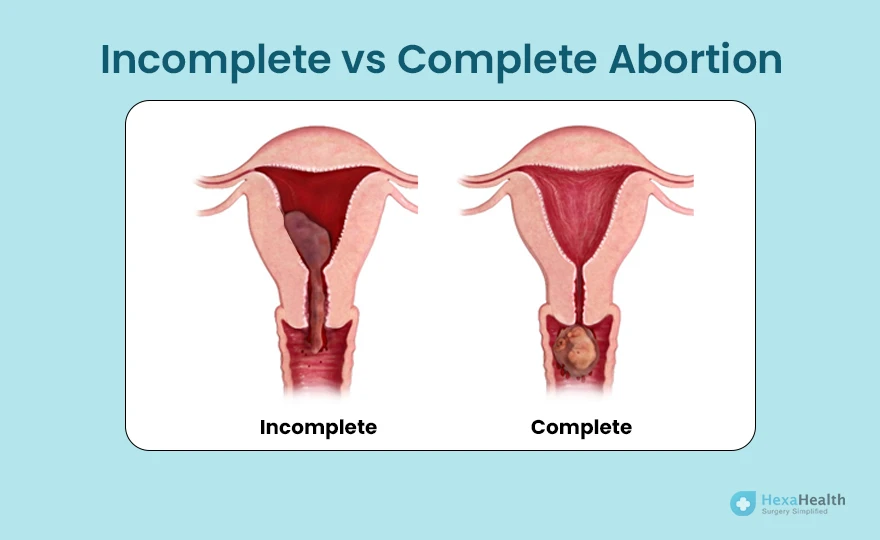Table of Contents
Toggle
An incomplete abortion, also known as a spontaneous abortion is when some of the pregnancy tissue remains in the uterus following a miscarriage or during termination.
This mean that the uterus has no viable fetus and therefore a woman can not carry on with the pregnancy.
Diagnosing spontaneous abortion
To diagnose a spontaneous abortion, a doctor may order a pelvic exam to check for cervical dilation or effacement.
An Ultrasound:- With the help of a a stethoscope, the doctor will be able to tell the pulse rate and or even go further and perform more diagnostic investigation via an ultrasound.
Physical examination:- Should the patient notice the discharge of abnormal tissue or blood clots via the vagina, it is advisable to have these samples examined in a laboratory to determine whether its related to any other underlying health issues.
Blood tests:- By measuring hCG levels, they will be able to tell if the abortion was due to lower levels of Progesterone.
- Transvaginal or Transabdominal Ultrasound:- The doctor will perform either an abdominal or vaginal ultrasound to verify if any fetal tissue remains within the uterus following an abortion.
Causes of incomplete abortion
Approximately 50% of incomplete abortions are caused by chromosomal anomalies in the fetus, which are not preventable. Other factors might include:-
- Structural abnormalities:- Like uterine fibroids or birth defects, can make it more likely to have incomplete abortions.
- Unsafe abortions:- Women who use unsafe practices of abortion or buy medication online from untrustworthy abortion providers can end up giving you insufficient dosage to complete an abortion.
- Hormonal imbalances:- A spontaneous abortion can also be a result of hormonal discrepancies, such as insufficient progesterone levels.
- Misinformation:- Incorrect information regarding how to use abortion pills can also result into incomplete abortions.
- Incompetent cervix:- This condition occurs when the cervical tissue lacks the required strength to carry the fetus hence leading to a premature birth or even loss of a viable pregnancy.
Incomplete vs. incomplete abortion differences explained.

Preventive measures!
Several measures can be implemented to minimize the possibility of an incomplete abortion.
- Regular screenings:- Pregnant women should be advised not to miss their maternal screenings in order to detect any potential risks that may cause long term effects.
- Avoiding direct xrays:- Lastly but not least, it is important to keep a close eye on any alarming symptoms during pregnancy.
- Unregulated clinics:- It is very crucial to obtain abortion services from a certified abortion providers / Clinic near you because before performing abortions, precautionary tests are done. Secondly, use all the medication provided and always follow the instructions and posy abortion guidelines accordingly.
Risks of an incomplete abortion

The risk of a spontaneous abortion causing death is much higher after 14 weeks. There is is recommended to seek medical assistance from an approved abortion clinic near you immediately to avoid severe complications.
Treatment options
Treatment of a spontaneous abortion is in 3 ways depending on the gestation period of the pregnancy.
Expectant Management:- This approach involves waiting for the miscarriage to happen naturally without medical intervention.
Medical Treatment:- In this method, patients are administered abortion pills, such as Misoprostol, which induce uterine contractions to complete the miscarriage process.
Dilatation and Curettage:- This is a surgical procedure where a curette is used to remove any remaining contents from the uterus.
If you need help with evaluations or treatment of incomplete abortions, Cavewell Women’s Clinic provides cost-effective abortion services and referrals in safe an confidential environment.
Coping with pregnancy loss: Steps to take for healing.
To manage the emotional distress associated with an incomplete abortions, certain coping strategies can be beneficial.
- Miscarriages are common, often caused by genetic abnormalities or developmental issues. So it’s important not to blame oneself in order to emotionally heal without any regrets.
- After a pregnancy loss, couples should navigate the aftermath together.
- Creating a supportive and open environment is helpful for healing after losing a pregnancy. Seeking counseling or joining support groups can help process emotions, cope with grief, and connect with others who have had similar experiences.
Sharing is Caring
Frequently Asked Questions
Whose at risk of an incomplete abortion?
Incomplete abortions tend to occur more frequently in women aged 35 and above compared to their younger counterparts. Other contributing factors that may increase the risk of incomplete abortion encompass a history of previous miscarriages, complications related to the uterus or cervix, as well as lifestyle habits such as smoking and alcohol consumption.
Can an Ultrasound detect a spontaneous abortion?
Yes, The most effective methods to diagnose an incomplete abortion are through an ultrasound and a human chorionic gonadotropin level test. Typically, the ultrasound will reveal the presence of residual foetal products in the uterus.
What antibiotics can i use to clean my womb
Administering antibiotics like Doxycycline and Metronidazole before are very effective in preventing infections in case you have lost a pregnancy due to a miscarriage or incomplete abortion. They target and eliminate harmful bacteria that could lead to complications post-surgery.
Lorem ipsum dolor sit amet, consectetur adipiscing elit. Ut elit tellus, luctus nec ullamcorper mattis, pulvinar dapibus leo.
Lorem ipsum dolor sit amet, consectetur adipiscing elit. Ut elit tellus, luctus nec ullamcorper mattis, pulvinar dapibus leo.
